Did you know that the rex begonia vine, also known as Cissus discolor, is one of the most sought-after houseplants in the United Kingdom? Its stunning variegated leaves and trailing growth make it a popular choice for indoor plant enthusiasts.
In this article, I will share valuable plant care tips and techniques to help you nurture and maintain your rex begonia vine. Whether you’re a seasoned plant lover or just starting your indoor gardening journey, this easy-care plant will thrive in low-light conditions and add a touch of exotic beauty to your home.
Appearance of Rex Begonia Vine (Cissus Discolor)
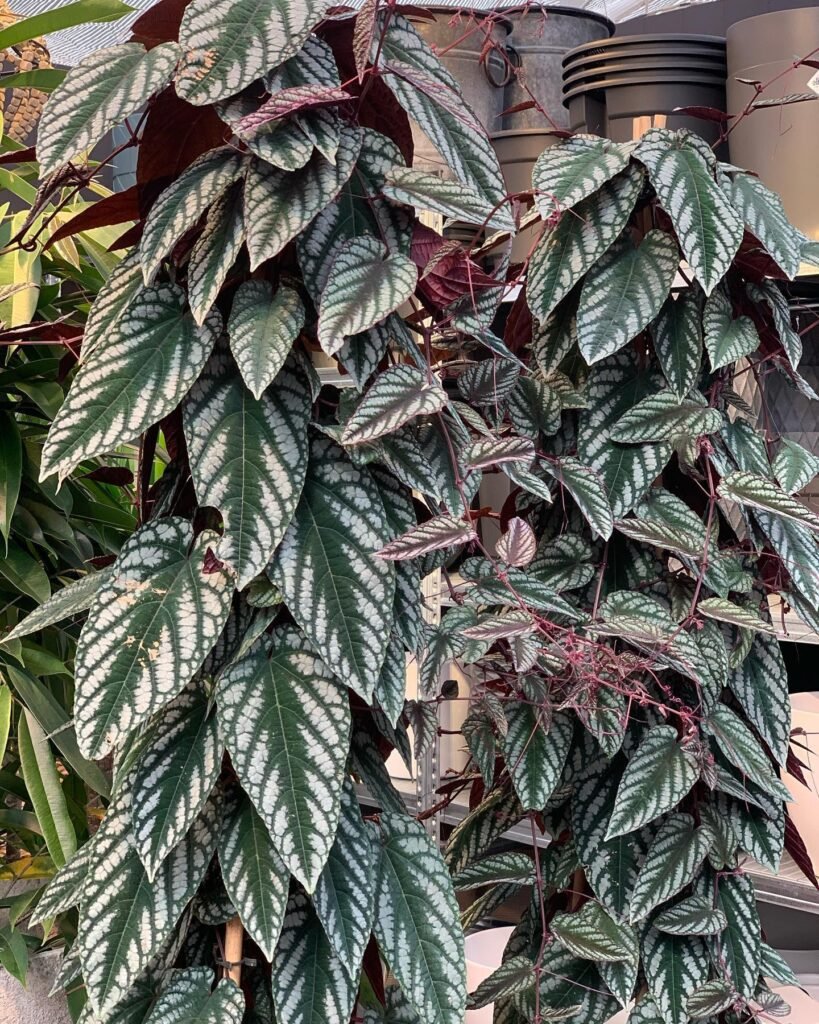

The rex begonia vine, also known as Cissus discolor, displays an enchanting appearance with its elongated heart-shaped leaves and striking variegation. The leaves exhibit a captivating blend of deep green, silvery white, and rich burgundy colours. As the leaves emerge, they appear in a solid burgundy shade, gradually transitioning into a mesmerizing display of contrasting hues.
The rex begonia vine typically grows to a length of 8 to 10 inches, showcasing delicate and wiry stems that gracefully twine around trellises or fences. When cultivated in hanging baskets or tall decorative pots, its cascading foliage creates a captivating waterfall effect, enhancing any space with its vivid and vibrant allure.
 The Rex Begonia Vine (Cissus Discolor) is a climber at heart, often seen scaling the forest floors and trees in its native habitat. In your home, it can mimic this behaviour by growing along trellises or moss poles, adding a dynamic vertical element to your indoor jungle.
The Rex Begonia Vine (Cissus Discolor) is a climber at heart, often seen scaling the forest floors and trees in its native habitat. In your home, it can mimic this behaviour by growing along trellises or moss poles, adding a dynamic vertical element to your indoor jungle.
Light Requirements for Cissus Discolor
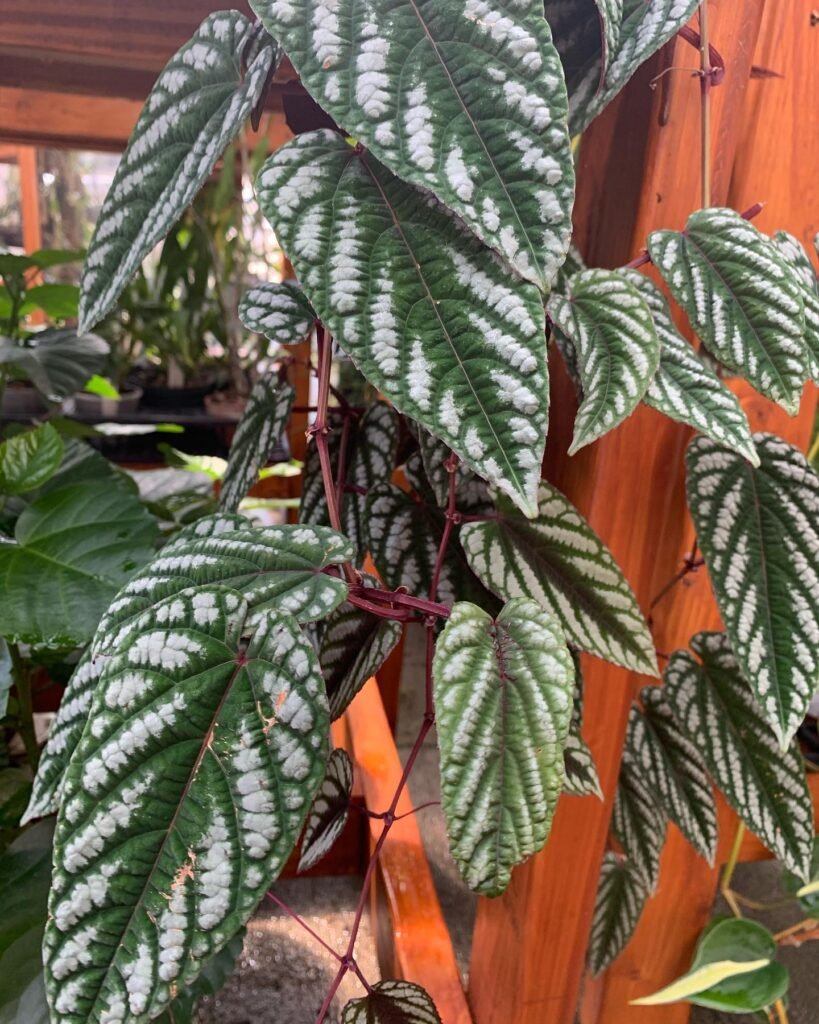

The rex begonia vine, known as Cissus discolor, is an exquisite indoor plant that adds a touch of tropical beauty to any space. To ensure optimal growth and vibrant foliage, it is important to provide the plant with the right amount of light. The rex begonia vine thrives in bright but indirect sunlight, mimicking its natural habitat as an understory plant in the tropical rainforest.
When growing a rex begonia vine as an indoor plant in the United Kingdom, placing it near an east-facing window is ideal. This location allows the plant to receive a high level of morning sun, which is less intense and beneficial for its growth. It is important, however, to avoid exposing the plant to intense afternoon sun, as it may scorch the delicate leaves.
If an east-facing window is not available, a south-facing window can also be suitable. However, it is essential to position the plant a few feet away from the window to prevent direct sun exposure. This helps to create the bright but indirect sunlight conditions that the rex begonia vine prefers.
It’s important to note that the rex begonia vine is a tropical plant that naturally grows beneath large trees in the understory, where it receives filtered sunlight. When grown outdoors, the plant should be placed in partial shade, with preference given to morning or afternoon sun. This replicates its natural environment, providing the rex begonia vine with the right amount of light to thrive.

Watering Tips for Rex Begonia Vine (Cissus Discolor)
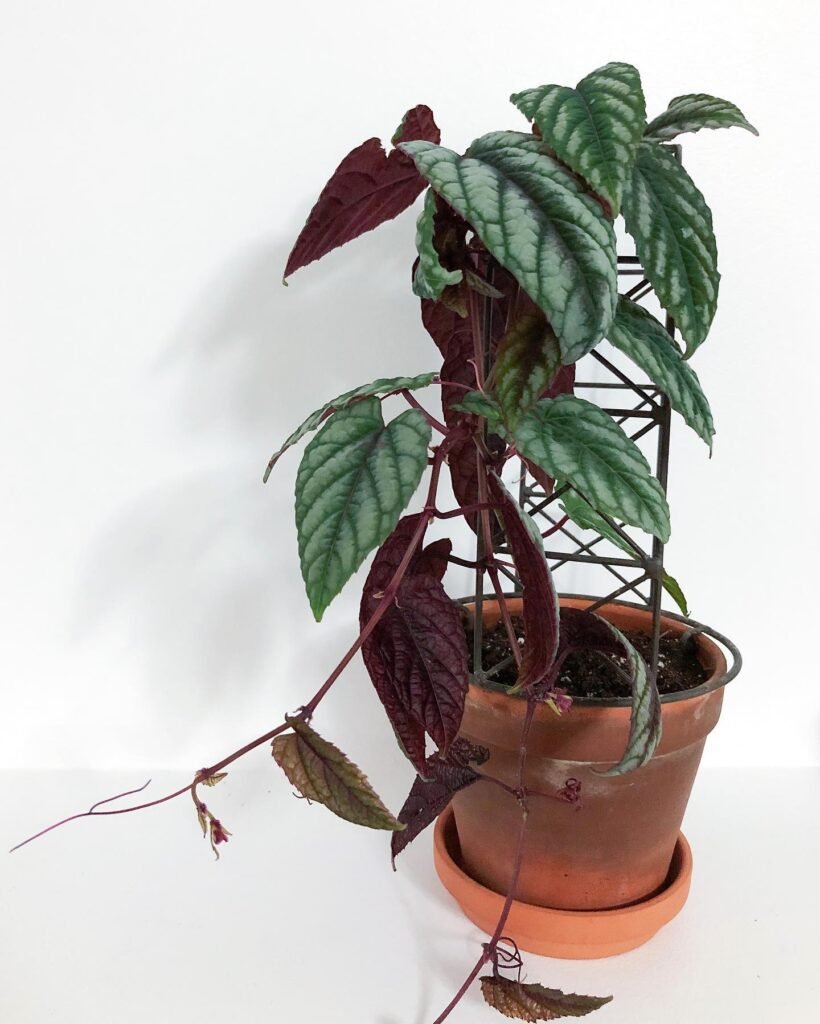
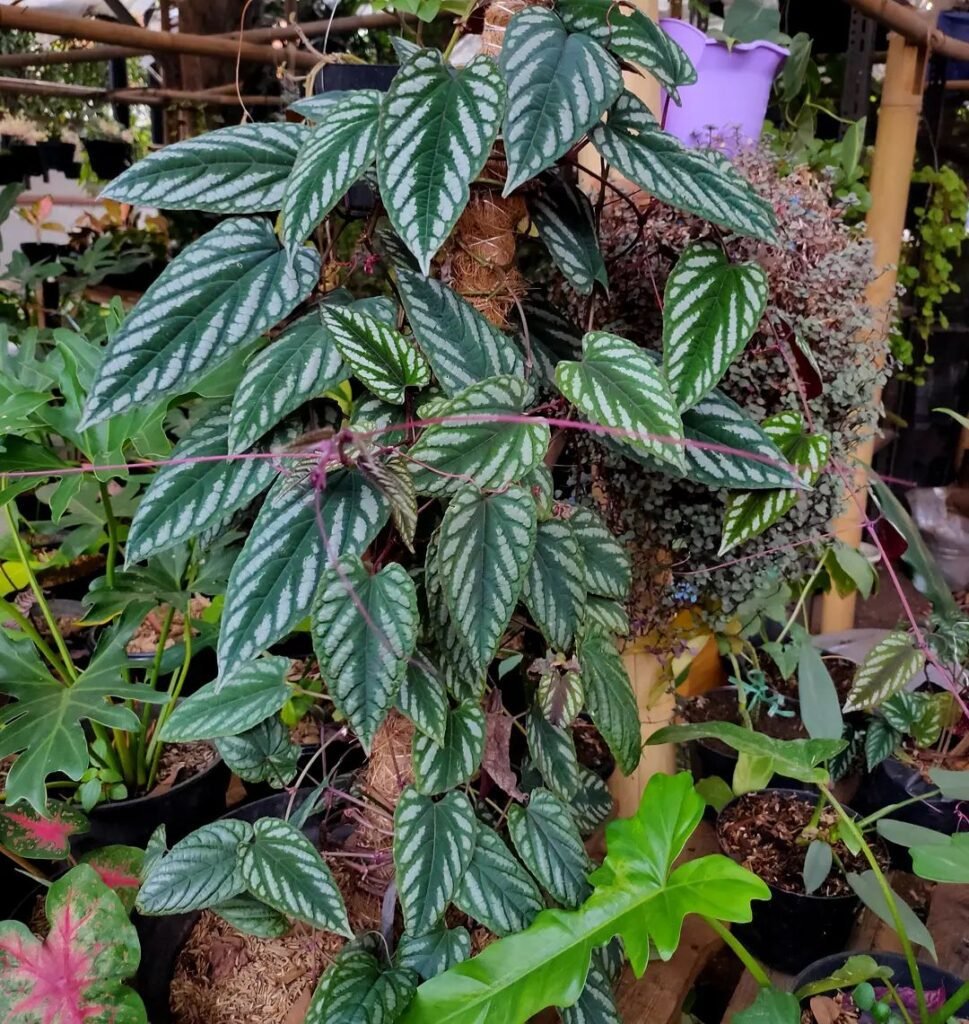
Proper watering is essential for the health and vitality of your rex begonia vine, whether it is grown indoors or outdoors. By understanding the water requirements and adopting the right watering practices, you can ensure lush and vibrant growth for your plant.
Watering Outdoor Rex Begonia Vine
When your rex begonia vine is grown outdoors, it is important to water it regularly to keep the potting mix moist. As a general guideline, you can water your plant whenever you water the other patio pots. Use a regular hose for watering, ensuring that the soil is adequately soaked. Hanging baskets or smaller pots may require daily watering during hot weather, while larger decorative containers will typically need watering every few days to maintain optimal soil moisture levels.
Watering Indoor Rex Begonia Vine
If you have a rex begonia vine as an indoor plant, it is crucial to monitor the soil moisture to determine when watering is necessary. As a general rule, water your plant when the top inch of the soil feels dry to the touch. This can vary depending on the size of the pot and the environmental conditions, so it’s essential to observe your plant and adjust accordingly. Smaller pots may require watering every 8-10 days, while larger pots can be watered every 10-14 days.
When watering your indoor rex begonia vine, ensure that the pot has proper drainage to prevent waterlogging. Excess water sitting in the saucer beneath the pot can lead to root rot and other issues. Allow the water to drain freely through the pot, and remove any excess water from the saucer to maintain optimal soil moisture levels.
Signs of Proper Watering
One of the best ways to determine if your rex begonia vine is being watered adequately is to observe its foliage and overall appearance. A well-hydrated plant will have lush, vibrant leaves and healthy growth. On the other hand, signs of underwatering include wilted leaves, browning or crispy edges, and overall drooping appearance.
Ideally, you want the soil to remain consistently moist but not waterlogged. Finding the right balance is key to the overall health and vitality of your rex begonia vine.
Remember, each plant’s water requirements may vary slightly based on environmental factors, such as temperature and humidity. Therefore, it’s important to monitor your rex begonia vine closely and make adjustments to your watering routine as needed to ensure optimal growth and well-being.

Fertilizing and Soil for Rex Begonia Vine


Proper fertilizing and soil conditions are essential for the healthy growth of your rex begonia vine (Cissus discolor). By providing the right nutrients and a suitable soil environment, you can ensure that your plant thrives both indoors and outdoors.
It is recommended to fertilize your rex begonia vine every 3 or 4 weeks during the active growing season, which typically extends from spring through late summer. An organic liquid fertilizer specifically formulated for houseplants is ideal for promoting balanced growth and vibrant foliage. Remember that during the autumn and winter months, when the plant is in its dormant phase, fertilization is not necessary as the plant is not actively growing.
Whether you choose to grow your rex begonia vine indoors or outdoors, using well-draining soil is crucial. This ensures that water does not become trapped around the roots, preventing rot and other soil-related issues. Most commercially available potting soils already contain sufficient nutrients for the plant’s initial growth. However, over time, the potting soil can become depleted of essential nutrients. To replenish these nutrients for long-term growth, it is advisable to repot your rex begonia vine yearly using fresh potting soil.
When repotting, select a container slightly larger than the current one to allow for continued growth. Fill the new pot with fresh potting soil and gently remove the plant from its current container. Loosen the roots and place the rex begonia vine in the new pot, filling in the remaining space with additional soil. Water thoroughly to settle the plant into its new home and provide a good start for continued growth.
By following these fertilizing and soil tips, you can provide your rex begonia vine with the nutrients and soil conditions it needs to flourish. Remember to fertilize regularly during the active growing season and repot annually to replenish essential nutrients. With proper care, your rex begonia vine will reward you with lush foliage and stunning beauty.

Pruning and Maintenance for Cissus Discolor
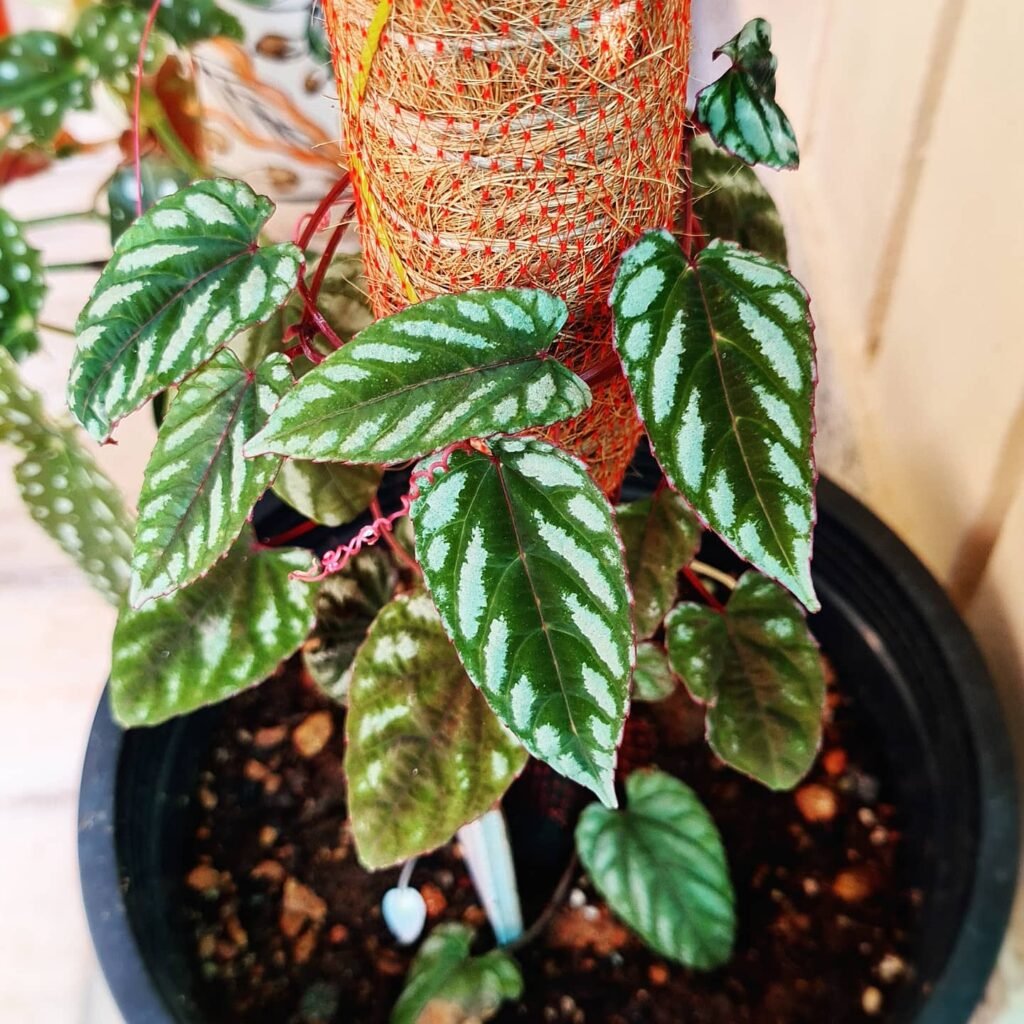
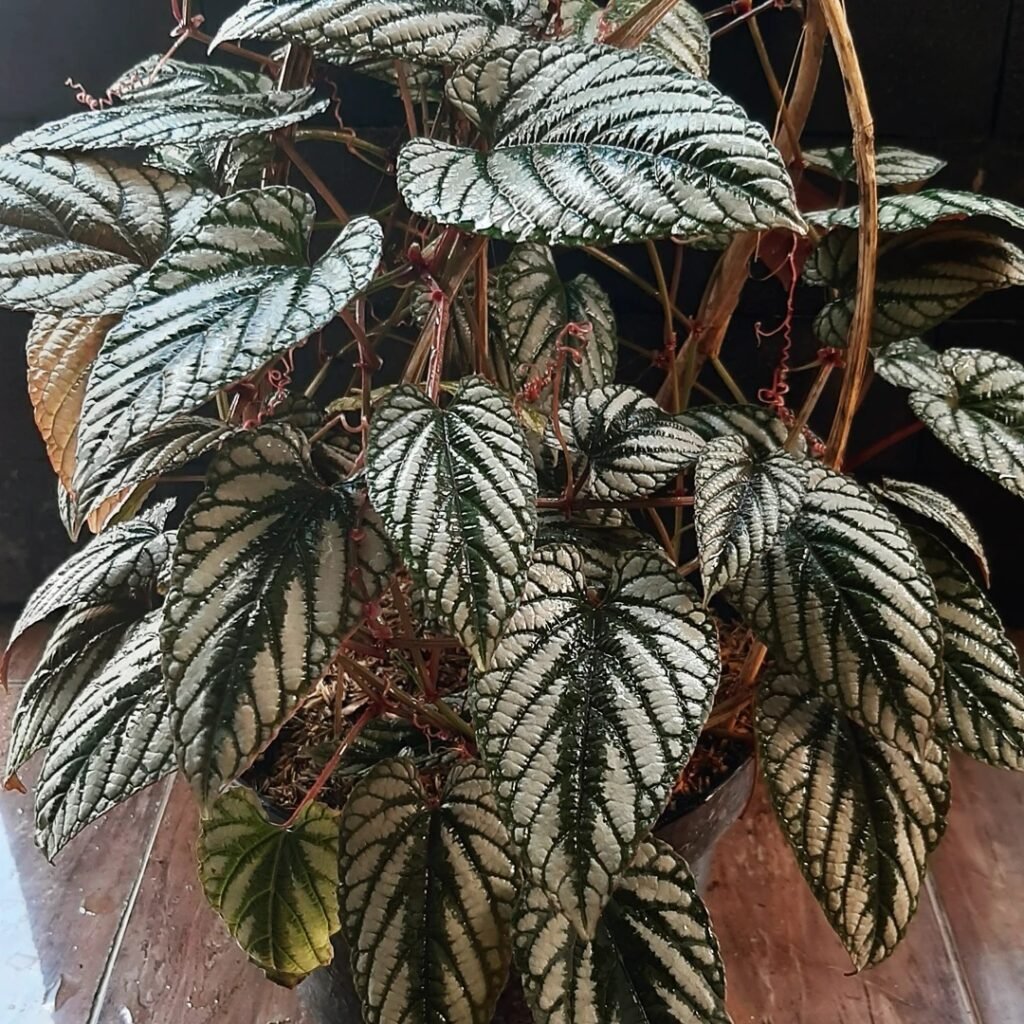
Pruning is an essential part of maintaining a healthy rex begonia vine, whether it is grown outdoors or indoors. The specific pruning practices differ depending on the plant’s location, so let me guide you through the process for each scenario.
Outdoor Plant Pruning:
If you have a rex begonia vine growing outdoors, it is advisable to trim it in the autumn before bringing it indoors. This allows you to control its growth and make the transplanting process easier. By giving it a light trim, you can ensure that the plant stays in a manageable size and shape during the winter months.
Remember, proper preparation in the fall leads to a successful transition indoors, keeping your rex begonia vine healthy and vibrant all year round.
Indoor Plant Pruning:
If you have a rex begonia vine thriving as an indoor plant, you have the flexibility to prune it whenever the vines start to become unruly. This can be done to manage the size of the plant or to propagate new plants using stem cuttings.

Propagating Rex Begonia Vine (Cissus Discolor)


When it comes to propagating a rex begonia vine, there are three effective methods you can try: stem cuttings rooted in water, stem cuttings rooted in soil, and layering.
For stem cuttings rooted in water, you’ll need to select a healthy stem cutting that is about 6 inches long and has 3-4 leaves. Place the bottom end of the cutting in a container of water, making sure it’s submerged by about 1-2 inches. Over the course of 4-6 weeks, roots will start to develop. Once the roots are established, you can transfer the cutting to a pot with well-draining soil, allowing it to grow into a new plant.
The second method is rooted stem cuttings in soil. To do this, take a stem cutting that is similar in size to the previous method. Dip the bottom 1 inch of the stem in a rooting hormone to encourage root growth, and then plant the cutting in moist, well-draining soil. With proper care and regular watering, the cutting will develop roots and become a new plant.
The last method is layering, which involves bending a lower stem of the rex begonia vine to the ground and securing it with a U-shaped pin. Cover the bent portion of the stem with soil, making sure it is in contact with the ground. Over time, roots will form at the covered section. Once the roots are well-established, you can cut the rooted portion away from the original plant and pot it as a new individual.
Tips for Successful Propagation
- Choose healthy and mature stems for propagation, as these have a higher chance of success.
- Avoid overwatering the propagated cuttings or new plants, as it can lead to rotting. Instead, maintain a moist but well-draining soil.
- Place the propagated plants in a warm and bright location, but avoid direct sunlight, as it can scorch the delicate leaves.
- Monitor the progress of the cuttings or newly propagated plants regularly, ensuring they receive the care they need to thrive.

Repotting Tips for Cissus Discolor
When caring for your rex begonia vine (Cissus discolor), it is important to know when and how to repot the plant. Repotting is necessary when the plant becomes rootbound or overcrowded in its current container. A clear sign that repotting is needed is when the plant has doubled in size or when you can see its roots poking out of the soil surface. To ensure successful repotting, follow these tips:
- Choose the right container size: Select a pot that is slightly larger than the current one to allow room for the plant’s growth. This will prevent the roots from becoming cramped and restricted.
- Use fresh potting soil: Fill the new pot with fresh potting soil to provide the plant with the necessary nutrients and aeration. This will promote healthy root development and overall plant growth.
- Ensure proper drainage: It is crucial to choose a pot with proper drainage holes to prevent waterlogged soil, which can lead to root rot. Good drainage is essential for the plant’s overall health and vitality.
- Gently remove the plant: Carefully take the rex begonia vine out of its current container, being mindful not to damage the roots. Loosen the roots gently to stimulate future growth.
- Place the plant in the new pot: Position the plant in the new pot, making sure it sits at the same depth as it was before. Spread out the roots to ensure they have room to grow in the fresh soil.
- Fill in with additional soil: Add more potting soil around the plant, firming it gently to secure the plant in place. Avoid packing the soil too tightly, as this can hinder proper root growth.
- Water thoroughly: After repotting, give the plant a thorough watering to settle the soil and hydrate the roots. Ensure the water reaches all parts of the potting mix.
- Allow the plant to settle in: Place the newly repotted rex begonia vine in a suitable location and allow it some time to adjust to its new environment. Avoid placing it in direct sunlight immediately after repotting.
It is best to transplant the rex begonia vine in the early spring, as this is when the plant is entering its active growth phase. By following these repotting tips, you can ensure that your rex begonia vine thrives in its new container, promoting healthy root development and encouraging new growth.
Overcoming Common Challenges in Growing Rex Begonia Vine
Growing a rex begonia vine can present some challenges, but they can be overcome with proper care and attention. As a plant enthusiast, I understand the common difficulties that arise when cultivating rex begonia vine (Cissus discolor). Here are some tips and solutions to overcome these challenges:
1. Yellowing Leaves
Yellowing leaves are often a sign of watering issues or nutrient deficiencies. Ensure that you are providing the right amount of water for your plant’s needs. Allow the top inch of soil to dry out before watering again. Additionally, fertilize your rex begonia vine regularly with a balanced houseplant fertilizer to prevent nutrient deficiencies.
2. Browning Leaves
Browning leaves can be caused by various factors, including inadequate sunlight and temperature stress. Make sure your rex begonia vine receives adequate indirect sunlight, as it thrives in bright but indirect light. Avoid placing it in direct sunlight, as this can cause leaf scorching. Maintain a consistent temperature range of 18-26°C (64-79°F) to prevent stress and browning leaves.
3. Drooping Leaves
If your rex begonia vine’s leaves are drooping, it may be a sign of overwatering or underwatering. Check the moisture level of the soil by inserting your finger into the top inch. If it feels dry, it’s time to water. If it feels moist, hold off on watering and check again in a day or two. Adjust your watering routine accordingly to maintain the proper moisture balance.
4. Pest Problems
Pest problems, such as red spider mites and mealybugs, can be prevented by maintaining proper humidity levels. Although the rex begonia vine doesn’t have high humidity requirements, misting the leaves occasionally or using a pebble tray filled with water can create a slightly more humid environment that deters pests. Regularly inspect your plant for any signs of pests and take prompt action if you notice any.
5. Diseases
Rex begonia vines are generally resilient to diseases. However, overwatering or poor drainage can lead to root rot. To prevent this, always ensure that the pot has proper drainage holes and that excess water can freely flow out. Avoid allowing the plant to sit in standing water, as this can promote the growth of harmful fungi and bacteria.
Using Rex Begonia Vine for Decorative Foliage
The rex begonia vine, also known as Cissus discolor, is renowned for its stunning decorative foliage, making it the perfect choice for enhancing indoor decor. With its cascading growth and variegated leaves, this ornamental plant adds a touch of tropical vibes to any space. Whether placed in hanging baskets, tall pots, or trained to climb trellises, the rex begonia vine creates an eye-catching display.
What sets this trailing plant apart is its coloruful foliage, which brings a burst of vibrant hues and delightful textures to any room. The rex begonia vine’s low-maintenance nature adds to its appeal, making it a favourite among plant enthusiasts.
- Its cascading leaves lend an enchanting touch to hanging baskets
- Tall pots showcase its variegated leaves in all their glory
- When trained to climb trellises, it adds vertical interest to your indoor oasis
Embracing the rex begonia vine’s colourful foliage allows you to infuse your indoor space with an exotic touch. Its striking appearance brings life, colour, and texture to your home decor, creating a vibrant and inviting atmosphere.
Enjoying the Beauty of Rex Begonia Vine in the UK
Rex begonia vine, or Cissus discolor, brings its vibrant foliage and exotic allure to both indoor and outdoor gardens in the UK. As a versatile plant, it thrives in low-light conditions, making it an ideal choice for indoor cultivation in homes across the country. Its unique appearance and rare status as a houseplant make it a captivating addition to any collection of indoor plants. Outdoor gardeners can also enjoy the rex begonia vine during the warmer months, taking care to protect it from freezing temperatures. With its trailing growth and eye-catching foliage, this tropical plant adds a touch of elegance and tropical beauty to any UK home or garden.
Helpful Videos about Rex Begonia Vine (Cissus Discolor)
In this carefully chosen collection, I’ve gathered a series of engaging videos filled with advice on caring for your Rex Begonia Vine, also known as Cissus Discolor. These tutorials will guide you through the essential steps to ensure your vine remains vibrant and well, ideal for those new to gardening.
- How to Care for CISSUS DISCOLOR 🪴 Rex Begonia Vine Tips & Tricks
- Rex Begonia Vine | Cissus discolor – Complete Care Guide
- How to Propagate Cissus Discolor (Begonia Vine)
FAQ about Growing Your Rex Begonia Vine (Cissus Discolor)

Fancy learning how to look after your Rex Begonia Vine (Cissus Discolor)? Dive into my straightforward FAQ for all the top tips on nurturing your Cissus Discolor to flourish. Whether it’s the perfect lighting or the ideal watering regime, I’ve compiled everything you need to know.
Your Rex Begonia Vine thrives in bright, indirect sunlight. Direct sun can scorch its leaves, so a spot with filtered light is ideal.
Water when the top inch of soil feels dry to the touch. They prefer consistent moisture, but don’t let them sit in water.
A well-draining potting mix is perfect. You can mix in some perlite or orchid bark to improve drainage.
Signs of overwatering include yellowing leaves, wilting, and mouldy soil. Reduce watering if you notice these.
In the UK, it’s best grown indoors due to the cooler climate. However, you can take it outside in summer, in a shaded spot.
Propagate using stem cuttings. Place them in water or directly into soil until roots develop, then pot them up.
Brown edges can be a sign of low humidity. Try misting your plant or placing a humidity tray nearby.
Use a balanced liquid fertiliser diluted to half strength, every 4-6 weeks during the growing season.
Keep an eye out for spider mites and mealybugs. Wipe them off with a damp cloth or use an insecticidal soap.
It’s a fast grower during the growing season, especially if given the right conditions and care.
Pruning isn’t necessary but can help maintain shape and encourage fuller growth. Trim back as needed.
It prefers warmer temperatures. Keep it away from draughts and ensure the temperature doesn’t drop below 15°C.
Indoors, it can reach up to 2 metres in length if allowed to grow freely.
Providing a trellis or moss pole can help support its climbing habit and encourage vertical growth.
Repot every 2-3 years, or when it becomes root-bound, to a slightly larger pot.
Yes, it can be toxic if ingested by pets. Keep it out of reach of curious pets.
Besides misting, placing your plant in a bathroom or kitchen where humidity is higher can be beneficial.
Ensure it’s getting enough light and not over or under-watered. Consider repotting if it’s root-bound.
Leaf curl can indicate underwatering or too much direct sunlight. Check the soil moisture and lighting conditions.
I hope this has helped you understand how to look after your Rex Begonia Vine (Cissus Discolor). If you’ve got any questions, just pop them in the comments – I’m here to help. Remember, all gardeners start with empty soil, and there’s so much exciting plant knowledge for you to explore.
Conclusion
Caring for a rex begonia vine, or Cissus discolor, can be a rewarding and fulfilling experience for both indoor and outdoor gardeners. The stunning variegated leaves and cascading growth of this tropical vine add a touch of exotic beauty to any space, making it a perfect choice for houseplant enthusiasts and passionate gardeners alike.
To ensure vibrant growth and stunning foliage, proper plant care is essential. Providing the rex begonia vine with the right amount of light, water, and nutrients is crucial. Whether you choose to grow it indoors or outdoors in the UK, make sure to place it in a spot that receives bright but indirect sunlight. Regularly check the moisture levels of the soil and water the plant when it feels dry to the touch.
In addition to water, fertilizing the rex begonia vine every few weeks during the growing season will help promote healthy growth and vibrant foliage. Pruning and maintenance, such as trimming unruly vines and propagating new plants from stem cuttings, will keep the plant in a neat and manageable shape.
By following these plant care tips and techniques, you can nurture your rex begonia vine to create a lush and beautiful display in your UK home. Whether it’s placed in a hanging basket, decorative pot, or trained to climb a trellis, the rex begonia vine will bring a vibrant tropical vibe to your indoor or outdoor garden. With its stunning foliage and easy-care nature, this ornamental plant is sure to impress and delight you for years to come.

